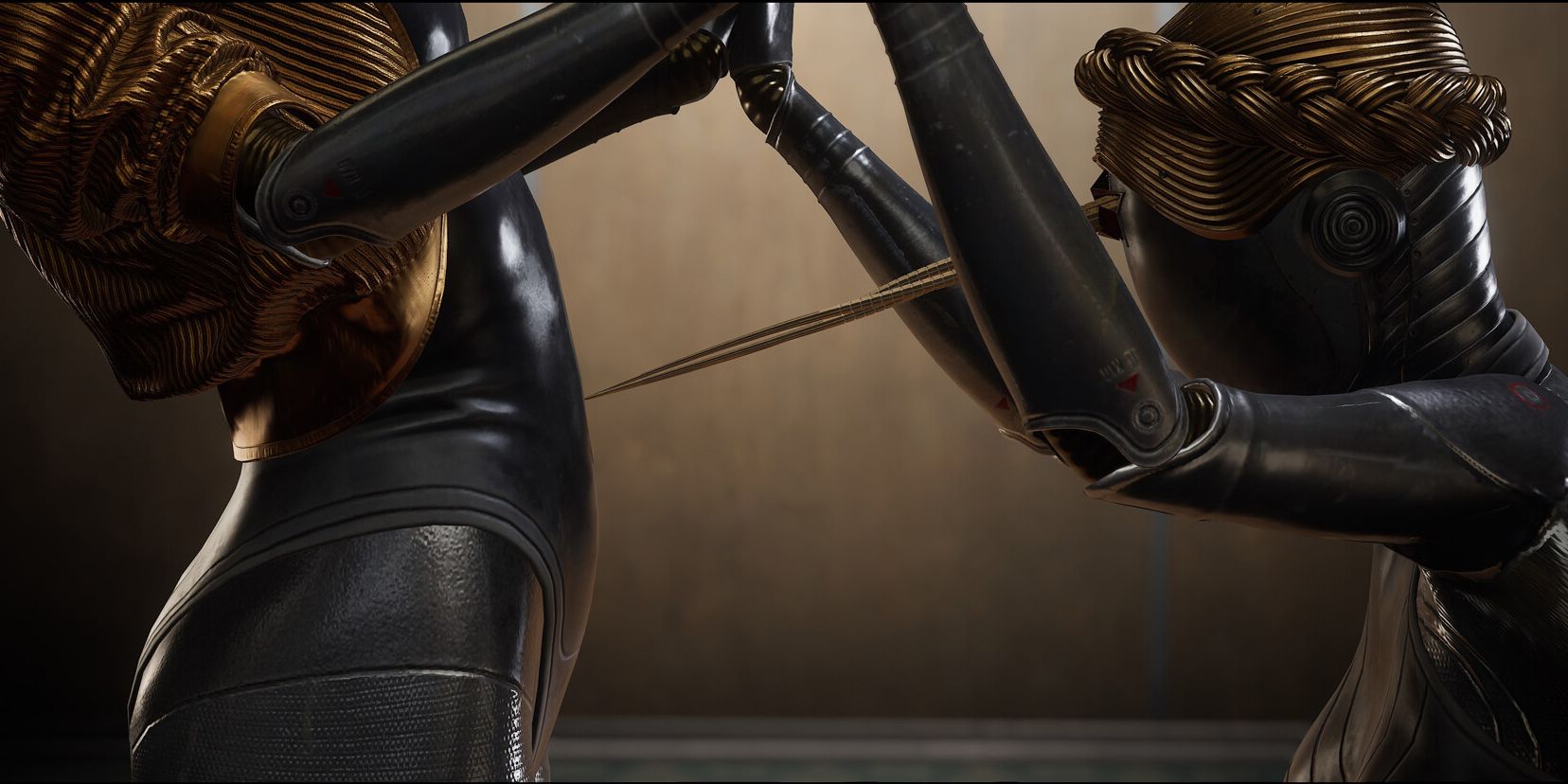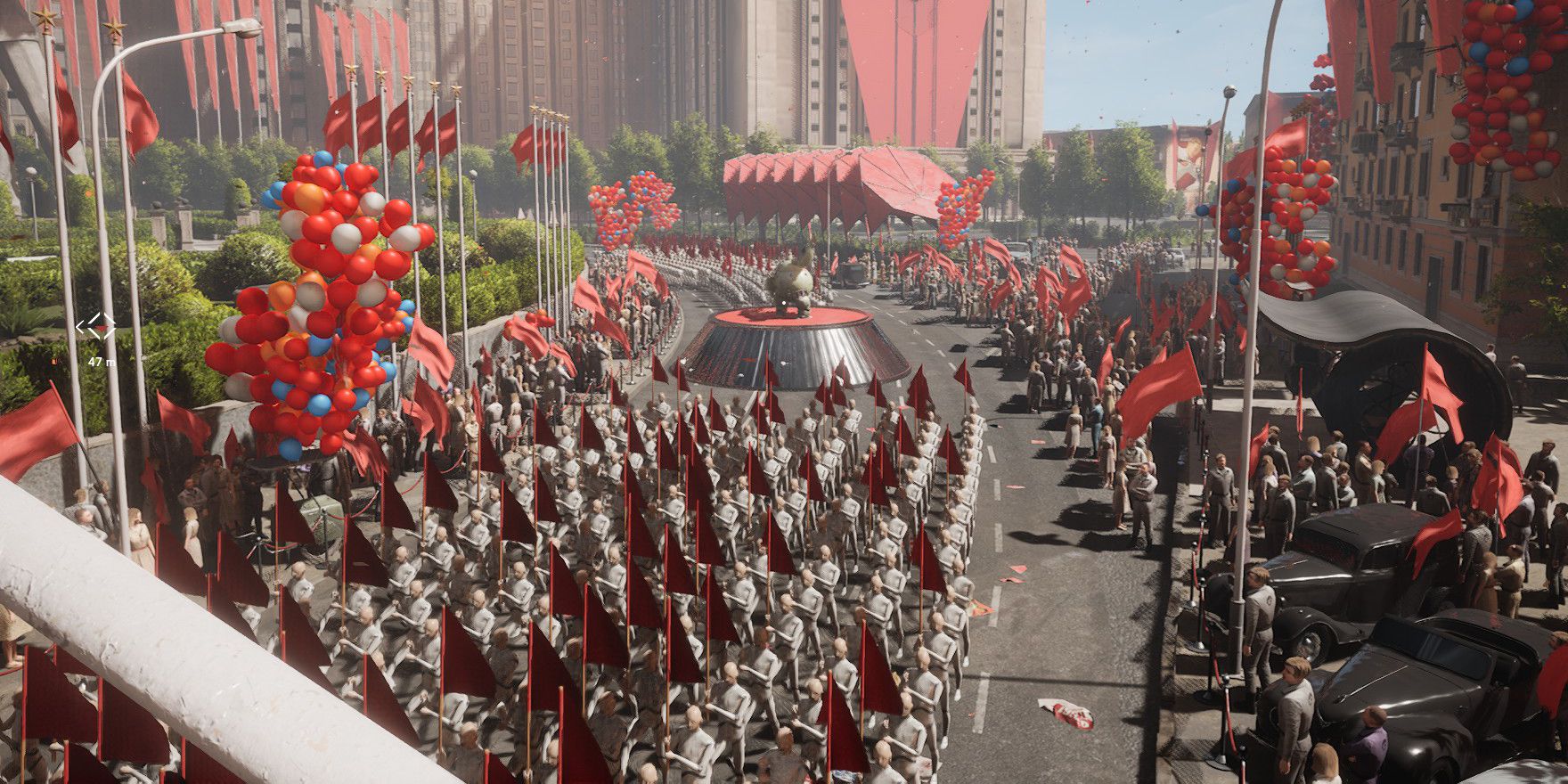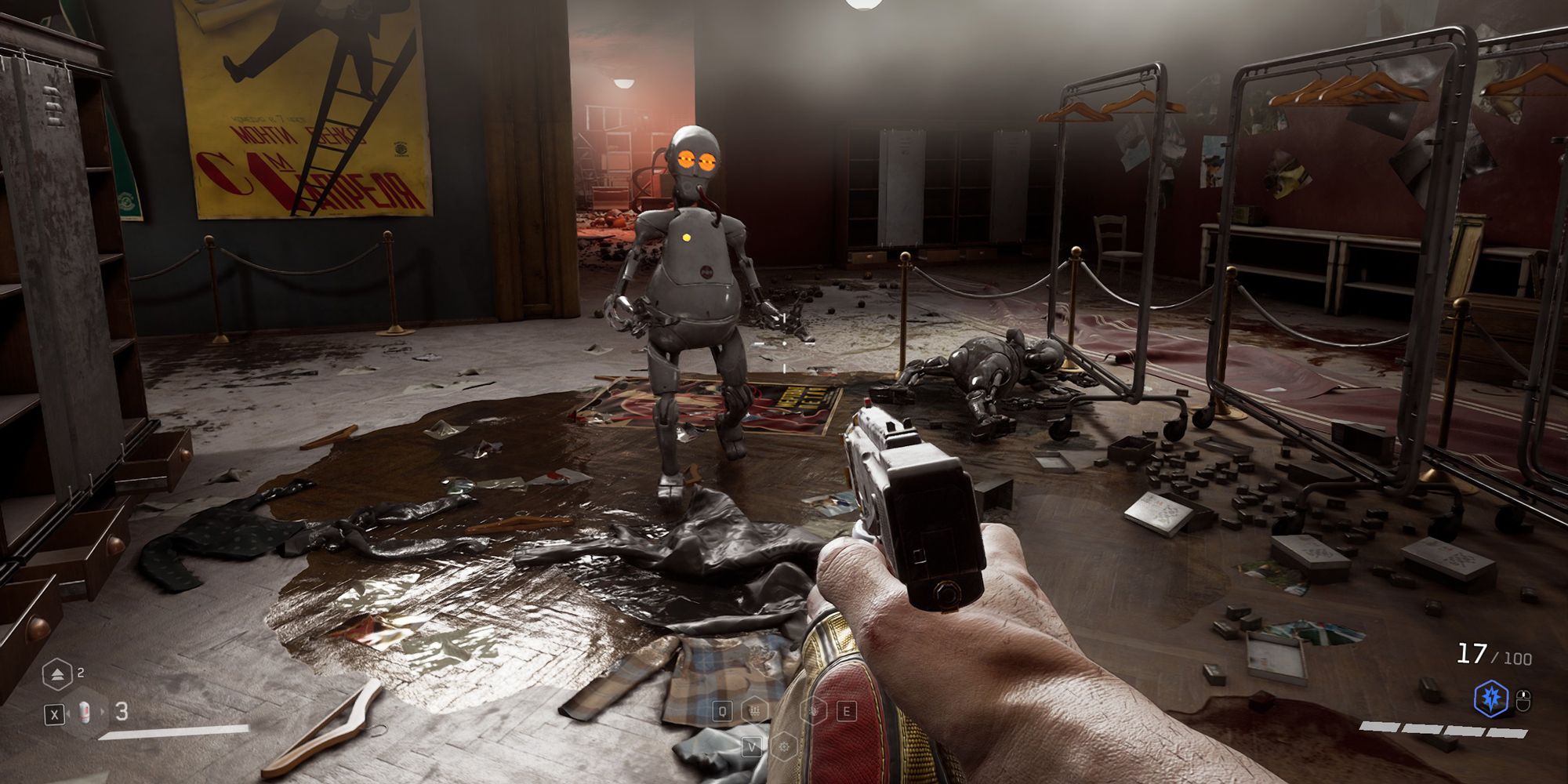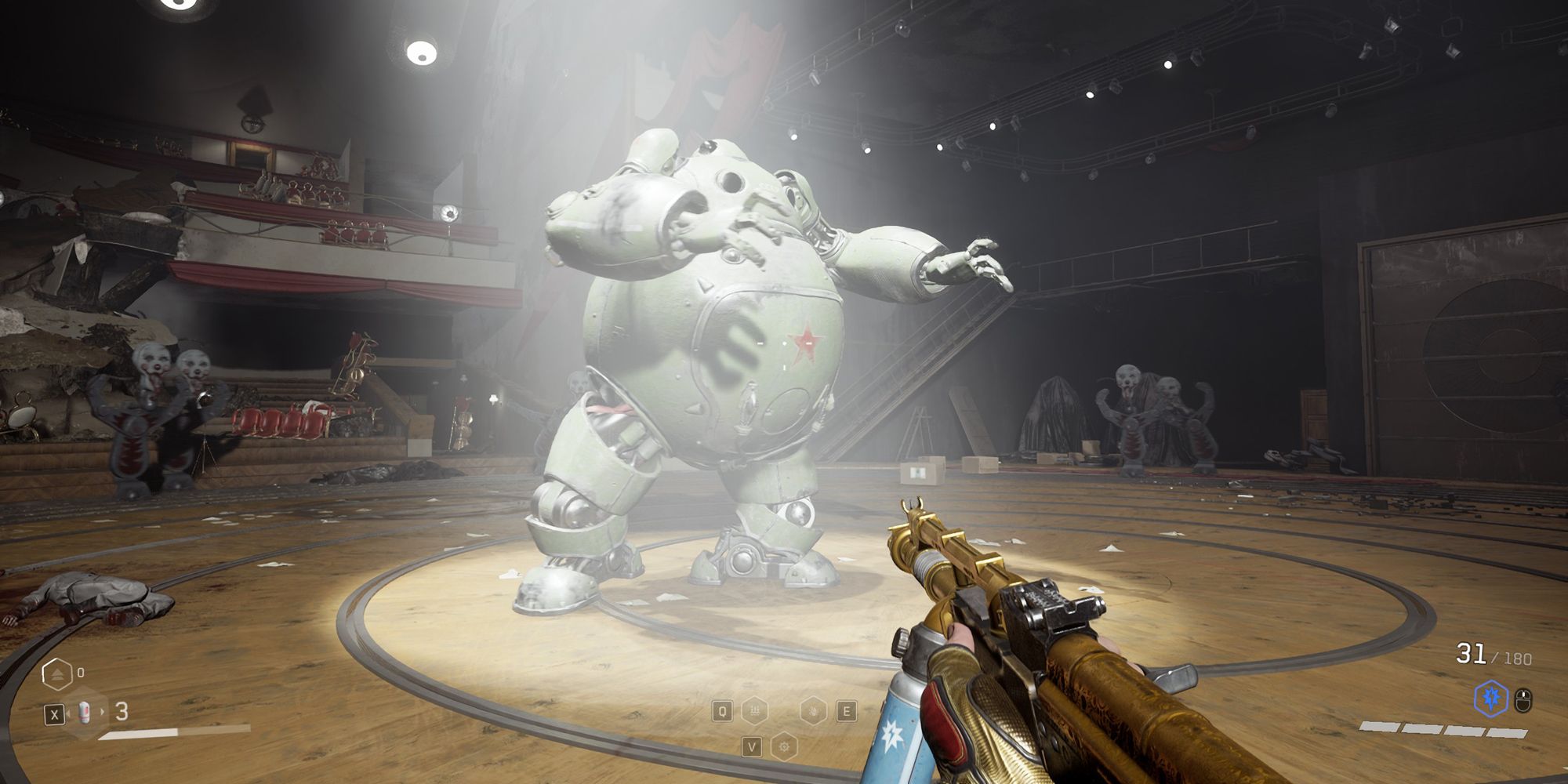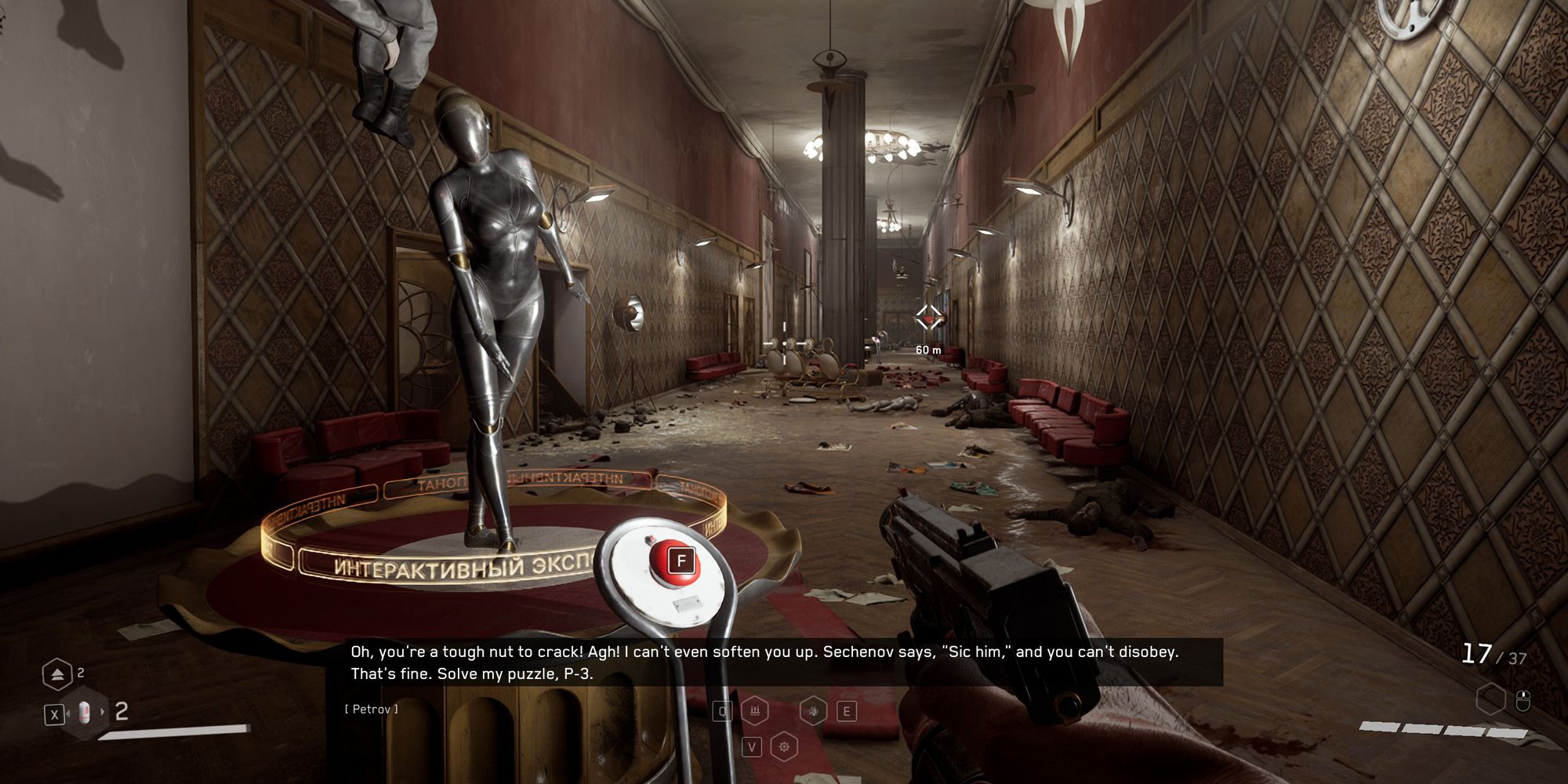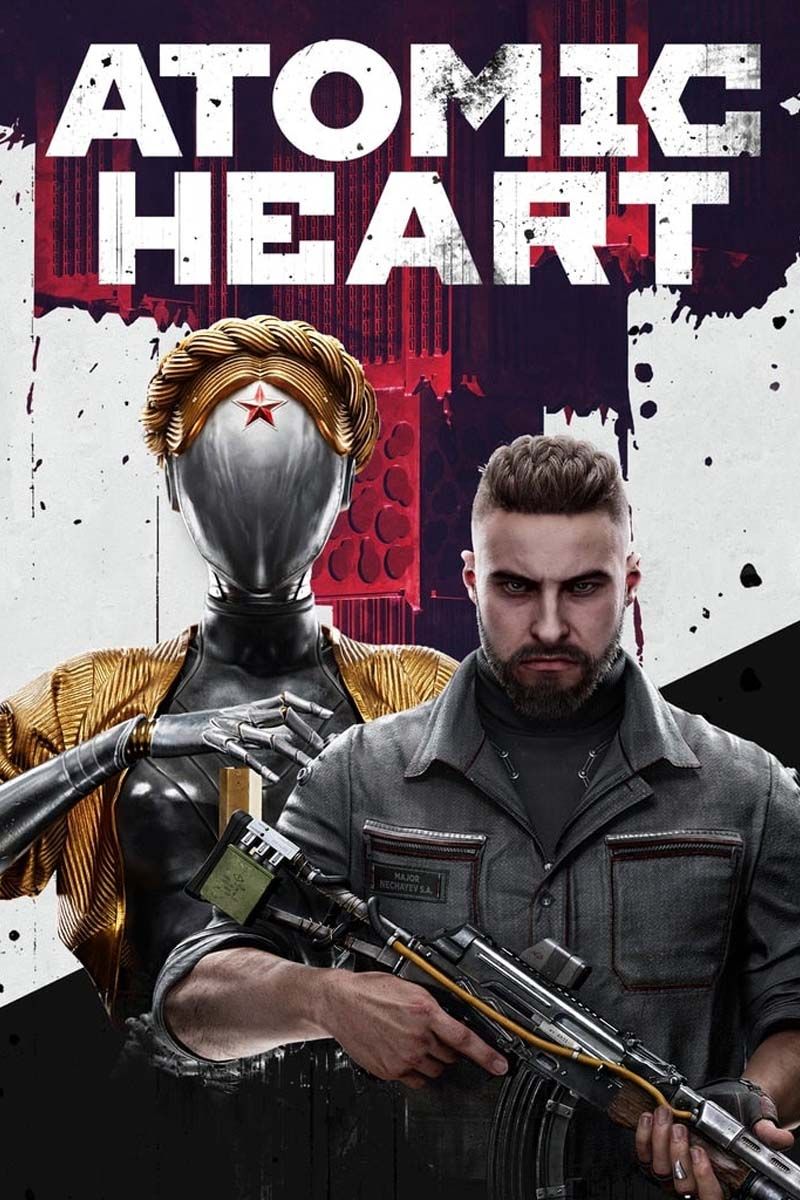
Atomic Heart
A spectacular open-world shooter set in a Soviet propaganda poster gone wrong.
- Impressive art direction - from robot design to soundtrack
- Memorable boss battles
- Impression attention to historical detail from Soviet era
- Lets you experiment with its roster of abilities
- Lacks alternative ways to fight (or avoid) enemies.
- Awkward voice-acting and writing
The early going in Atomic Heart has all the gravitas of a shooter that’s destined for greatness. You, a scientifically enhanced stooge of the most brilliant mind in an alt-history Soviet Union in the 1950s, are walking through a parade celebrating the technological might of the Soviet nation; a procession of charmingly retro robots parades through the immaculate streets of a Russian township, impossibly hovering high above the clouds on drone-like rotors. Look to the distance, and you see that your hovering town is just one of many, and the air is buzzing with automated machines zipping through the clouds and down to the Earth far below, where the various sections of a Soviet science facility wrap around a beautiful lake district. As alt-histories visions go, this is right up there with that of MachineGames’ Wolfenstein games.
Like the Half-Life train ride back in 1998, or the descent into Rapture in Bioshock in 2007, Atomic Heart’s opening feels immensely confident, no doubt bolstered by the inherent peacocking pomp of the Soviet Union. For a while it’s almost alarming seeing a depiction of the USSR that’s so glossy, so flattering–like one of those aspirational propaganda posters showing a man (or, more aptly, a robot) looking to the distance while an out-of-shot sun casts those radial beams from the corner of the picture. But rest assured that as with all the great single-player shooters–which Atomic Heart can certainly hold a light to if not quite match–shit soon hits the giant turbine fan, and you’re having to fight your way through a veritable robo-pocalypse. Someone’s reprogrammed the worker robots into combat mode, they go berserk and kill just about everyone, and it’s your job to get to the bottom of the conspiracy.
You mainly achieve this by smashing your way through tons of wonderfully retro-styled robots (and a few plant-zombies) using a combination of dieselpunky firearms, brutish melee weapons, and polymeric (basically tech-magic like Bioshock’s Plasmids or Prey’s Typhon Powers) superpowers. The combat feels really rather good. You’re not as mobile as, say, Doom Guy, and won’t be leaping between platforms while kiting around a swarm of quaintly mustachioed androids and cleaning-or-farming-turned-killer robots, but it still manages to feel impactful. A well-upgraded melee weapon can slice an Android in half, exposing its sparking cable-entrails.
Dodging is critical here, and you’ll get indicators showing you when an enemy is charging up a critical attack capable of knocking you off your feet, and leaving you vulnerable. It’s all well signposted and makes for a good flow that’s a little slower and more deliberate than a lot of those hipster boomer shooters you see today. I had a few maddening moments where plant-faced zombies would corner me against ‘immobile’ objects like desks and gurneys, and sometimes it feels like enemy numbers can get too dense for how resilient each of them is, but it’s by and large a good time.
The polymeric upgrades, which you earn by collecting salvage in the world, are a vital leveller in a game that doesn’t go easy on you (as indicated by the fact that saves are limited to save rooms and autosaves). Upgrades range from defensive shields, to electric and ice attacks, to (my personal fave) Mass Telekinesis, which lifts up enemies in a wide area around you, then slams them all to the ground. It’s always nice to see a game that wants you to play around with its toys, and I was pleased to see that you can freely refund your upgrades and swap them out for different ones. I took advantage of this by returning the frankly dire Polymeric Shield and replacing that with a Polymeric Jet, which sprays goo on enemies that slows them down and makes them more vulnerable to elemental damage (which you can capitalise on by bolstering your ammo with fire, ice, and electric effects).
And yet, despite the moments of immersive-simmy playfulness, I do feel that Atomic Heart could’ve leaned into it a little bit more. In a world filled with security cameras, robots, and little structures that endlessly pop out little repair bots to fix their fellow machines, it feels like an oversight not to have some kind of hacking capabilities that let you turn robot against robot to some extent. There’s the most basic of stealth systems, but it’s basically perfunctory, making hard to get around in the world without being spotted and swarmed by all manner of colourful robots.
The game wears its atomic heart on its sleeve, paying homage to classics like System Shock and Bioshock (at one point, it basically recreates the opening sequence of the latter, and the story has serious shades of it too). This isn’t just in terms of references either, but in its very design. You spend the first several hours of the game in a distinctly System Shock scenario–stuck in corpse-strewn research facility with only a hunk of metal and pistol to defend yourself with. These first few hours don’t really do the game justice however, and drag on a little too long. It’s only once the game expands into its well observed open world, set around the idyllic lakes of a Soviet research facility, that it really starts to pump its well-oiled pistons.
The open world isn’t filled with markers and arbitrary collectibles, nor does it allow for fast travel, and there’s something comical about the fact that in this world of advanced robotics, the best way to get around the world is by driving a ubiquitously red little Soviet banger of a car. There are a few ‘Training Grounds’ marked on the map, where you can find unique weapon mods by completing various convincingly challenging puzzle rooms and boss fights, but as someone of Polish descent with a fascination for Soviet-era style and architecture, I got plenty of joy from simply snooping around the period-accurate buildings, rummaging through offices, and listening to audio logs while authentic Russian music from the era (and later eras, which the game explains) plays in the background.
It especially won my heart when I saw that the in-game TVs play episodes of ‘Wolf & Rabbit’, an old Soviet cartoon that I’d avidly watch on my grandma’s wood-veneered TV in Poland. Now, there’s a whole discussion to be had about whether this game glorifies Soviet ideology (ultimately, I don’t believe it does), but there’s a difference between that and lovingly giving a glimpse into a different world that millions of people today grew up in. Despite the fact that it’s clearly a bombastic sci-fi adventure, Atomic Heart is also a well-detailed time capsule into a lost world. The one thing really missing from it all is some semblance of side-quests and NPC survivors, which seems viable given the short timespan in which events take place here. As things stand, you’re almost unfeasibly alone in this disaster scenario.
It’s a constant strange spectacle to be in this world, whether you’re fighting in the depths of a decimated theater designed for robotic ballerinas or exploring the overworld where towering stone statues loom, is enhanced by the awesome artistic vision. The interiors are diverse and impressive, ranging from the kitsch to the gaudy and grand, while enemy designs encompass allsorts–from humanoid robots that fire lasers from their heads to the non-hostile but unpredictable helper bots, who look at you with narrowed headlight eyes that are frighteningly difficult to read. That’s to say nothing of the bosses–behemoths who move around with deceptive speed and grace despite looking every bit like clangy 50s robots that might fall apart at any moment. Amidst all this, the ‘organic’ mutant-type enemies definitely feel a bit second-fiddle.
Atomic Heart’s story is where it finds itself flagging behind the genre greats. Sure, FPS games as a genre aren’t obliged to lean on a great story, but when your game has a purported 1.5 hours of cutscenes, an extremely chatty protagonist, and dramatic moments like dream sequences and flashbacks, then you’re imposing a narrative experience on the player, and your game will be judged on that. And there’s some bad writing here, mainly from our hero Major Sergei Nechaev (aka ‘P-3’), who sneers and jeers at his implanted AI sidekick Char-les like an obnoxious teenage boy struggling with the sudden overload of testosterone surging through his body.
The per-sentence density and inventiveness of his swearing is adolescent, his constant ‘Whatevers’ and ‘Just shut up’ tirades make me want to scream at him to shut up. On top of that, P3 is a just a bit of a bonehead. He does go on a character arc, sure, but given that the big twist is apparent to you and seemingly everyone around him within the first couple of hours, he remains an insufferable twat for way too long before the penny finally drops and we get a modicum of characterisation. With so many of the classic shooters have both great writing and silent protagonists, it baffles me that Mundfish thought it’d be a good idea to make its hero such an insufferable motormouth.
There are some glimmers of fun voicework, such as the cheery ladybots who acknowledge the horrors around them but are programmed to respond to everything with eternal optimism, but for the most part the English VO and writing is just a bit ‘off.’ It means that cool design touches, like the Bioshock-style audio diaries and the residual memory fragments of dead bodies you come across, just aren’t that interesting to listen to.
Fortunately, over many hours I was able to fade P-3’s pottymouth into background noise, and it ultimately doesn’t detract from an impressive shooter experience. The art direction of the robots is stunning, making every boss fight–be it against a giant metal rollerball or a pair of lascivious robotic ballerinas–a visual treat as well as a mechanical one. The great design work trickles down into little touches, like the fact that you can pick up items by just holding the ‘Use’ key and sweeping through a room, remotely pulling things enmasse from drawers and corpses into your pocket. The intense pacing of the combat, meanwhile, is neatly broken up by some accessible but clever environmental and door-unlocking puzzles.
Despite a few missed opportunities to really build on the great games it’s inspired by, Atomic Heart surprised me, with a remarkably inventive world that brings to life (the tears apart) the weirdest, wildest visions of Soviet propaganda. This is a game that’s been through over half a decade of development hell, and come out the other side as one of the best first-person shooters this generation.

